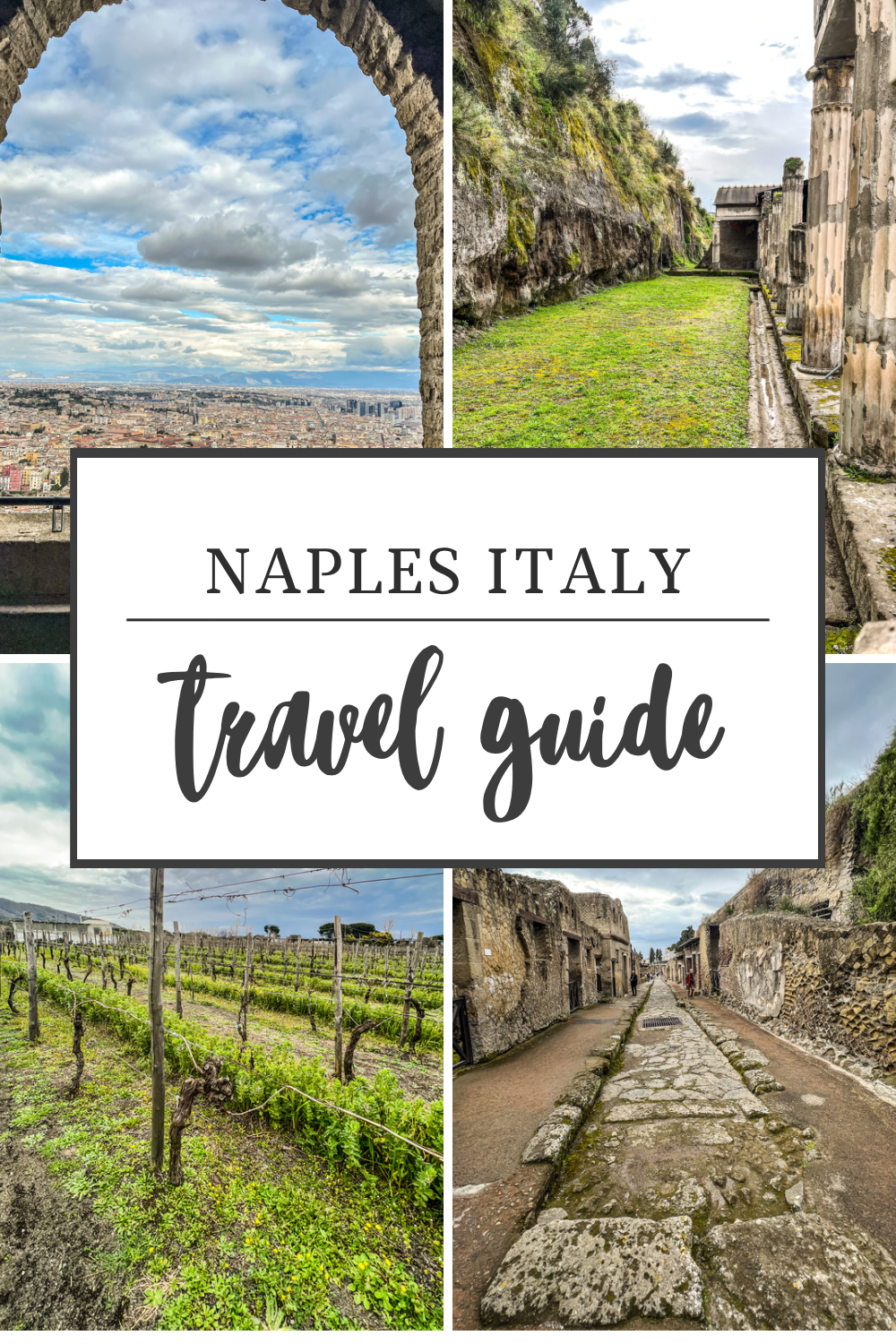Since the historical center of Naples is a UNESCO Heritage Site (the largest site in all of Europe), I suggest you walk for most of your visit. Otherwise, you couldn’t experience everything the city has to offer; you would miss the parts of the streets that are pedestrian-only. You can still take advantage of the local subway to save some precious time, especially if you are limited on time there. Don’t forget that one of Naples’ subway stations is considered one of the most beautiful subway stations in the world (Toledo Station).
Naples, Italy is a city that captures the heart and soul of anyone who visits. With a rich history, vibrant culture, delicious food, and breathtaking scenery, Naples is a destination that offers something for everyone. In this post, we’ll explore 16 top things to do in Naples, as well as answer some common questions about this incredible city.
Is Naples worth visiting? Absolutely! Naples is a city that has it all, from ancient ruins and beautiful churches to world-famous pizza and stunning views of the sea. The city’s narrow streets and bustling piazzas are full of character and charm, while its museums, parks, and historic landmarks will captivate anyone interested in history and culture.
Naples, Italy is a beautiful city filled with rich history, culture, and delicious food. Here are 16 top things to do in Naples:
Visit Pompeii
A short 35 minute train ride or 25 mile drive from Naples takes you to the ancient Roman city of Pompeii, which was destroyed by the eruption of Mount Vesuvius in 79 AD. In 1748 a group of builders were trying to excavate to build for King Charles III and they started to uncover the town and people that were in it that day that Mt Vesuvius covered the city in a blanket of hot ash in 79 AD. You can explore the ruins of the city, including the amphitheater, forum, and homes. It really is an underrated place in Italy that most people skip right over.
Visit Herculaneum
Herculaneum is an ancient Roman city located in Italy, just a few miles away from the famous city of Pompeii. It is known for being one of the few ancient cities that was preserved almost perfectly due to the unique way it was destroyed.
In 79 AD, Mount Vesuvius, a nearby volcano, erupted and buried the city of Herculaneum under a thick layer of volcanic ash, mud, and rock. This preserved the city’s buildings, artwork, and even some organic materials, such as wooden furniture, that would have otherwise deteriorated over time.
The city is also significant because it provides a glimpse into the daily life and culture of ancient Rome. The excavations at Herculaneum have uncovered well-preserved buildings, mosaics, frescoes, and even household items like pots and pans, which offer insights into the daily lives of the city’s inhabitants.
Overall, Herculaneum is a unique and valuable archaeological site, offering visitors and researchers a chance to step back in time and learn about the lives of ancient Romans in a way that few other places can provide.
The eruption of Mt Vesuvius started at around 1:00pm on 24 October 79AD. It was until about 1:00am people were hiding and waiting for the end of the volcanic activity when they were swallowed by pyroclastic density current flow (ash, rock and mud) from the volcano. Herculaneum was covered by over 65 feet of ash, rock and mud from the volcano; Only 25% has been excavated today, as the new city is built over most of it. There were about 5,000 inhabitants in Herculaneum. Herculaneum was found by mistake while looking to build and aqua duct in 1758.
In comparison Pompeii was covered by only 35 ft of ash and had about 20,000 inhabitants there.
If you only have time to see one of the ruins between Pompeii and Herculaneum, we would recommend Herculaneum. Three reasons Herculaneum is better than Pompeii: higher state of preservation, much less crowded and you can see more sites in less time because it is much smaller.
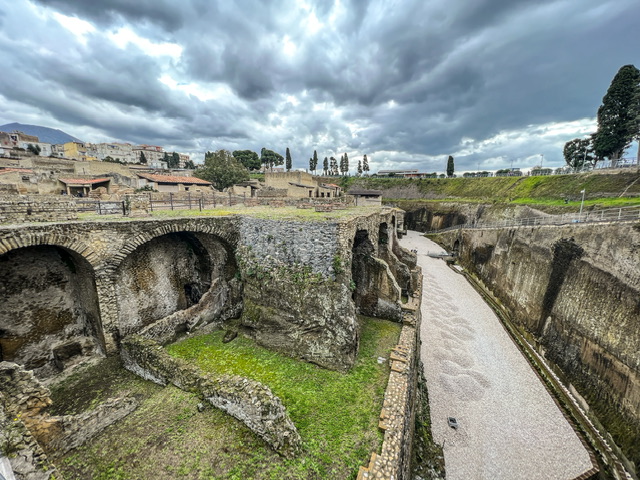
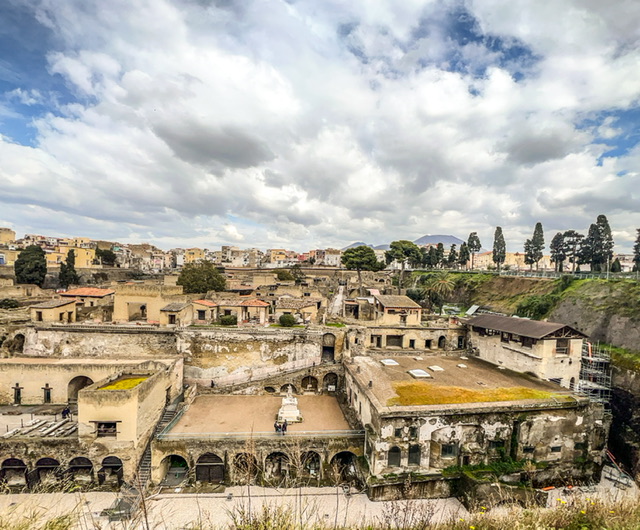
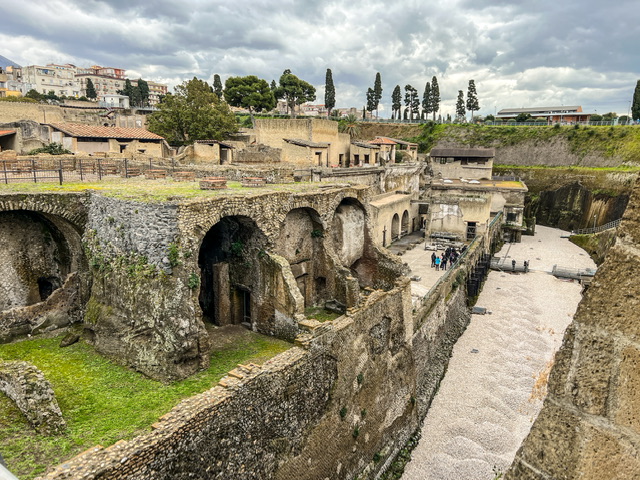
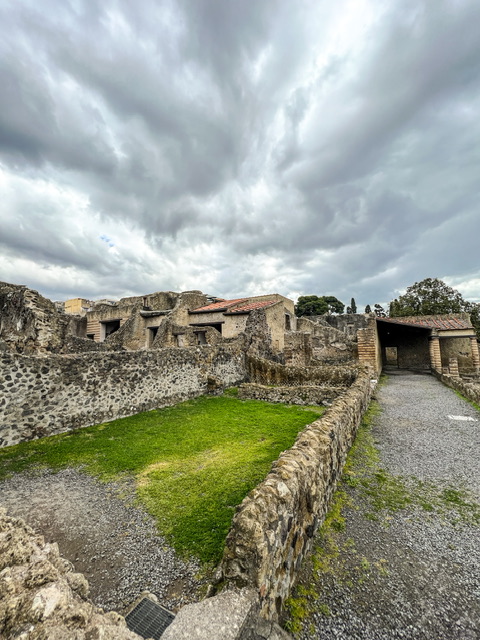
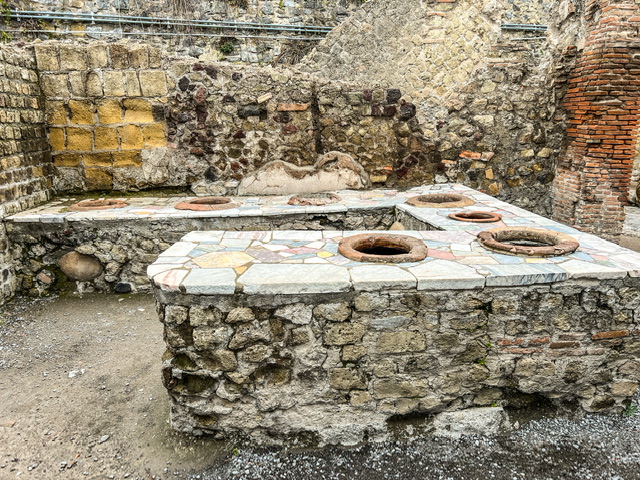
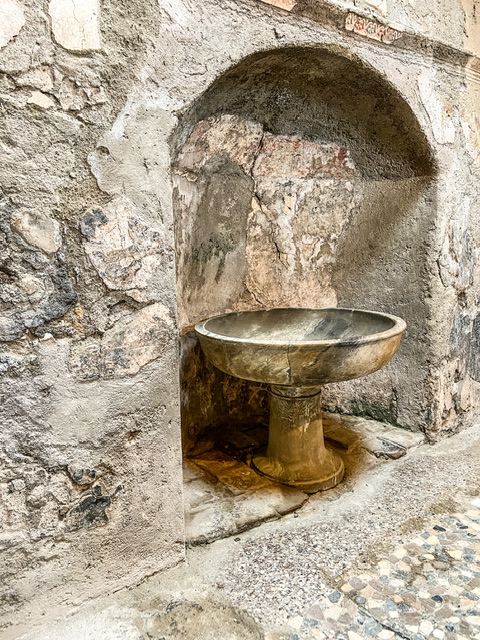
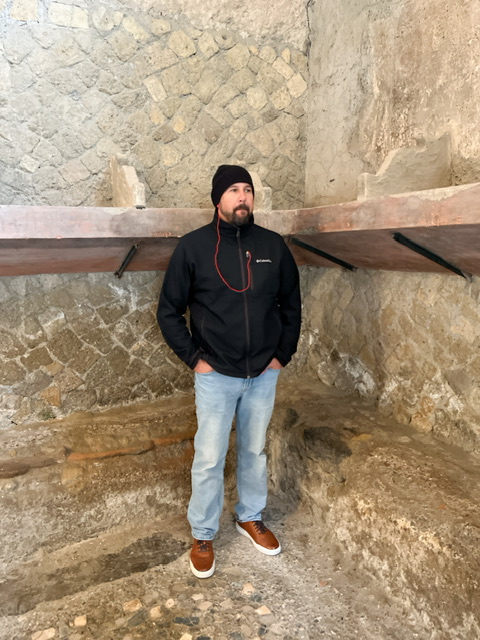
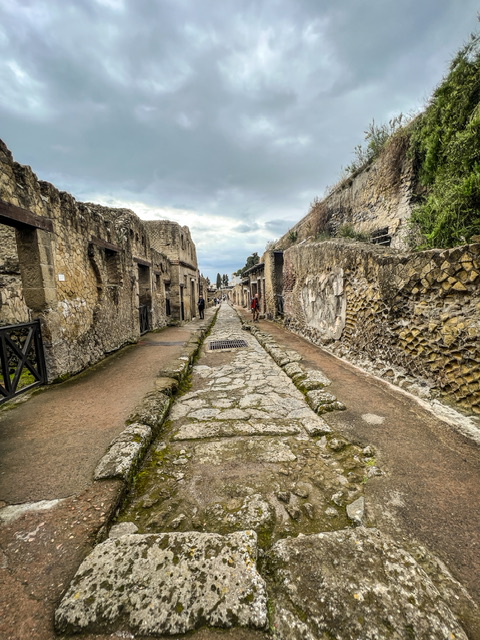
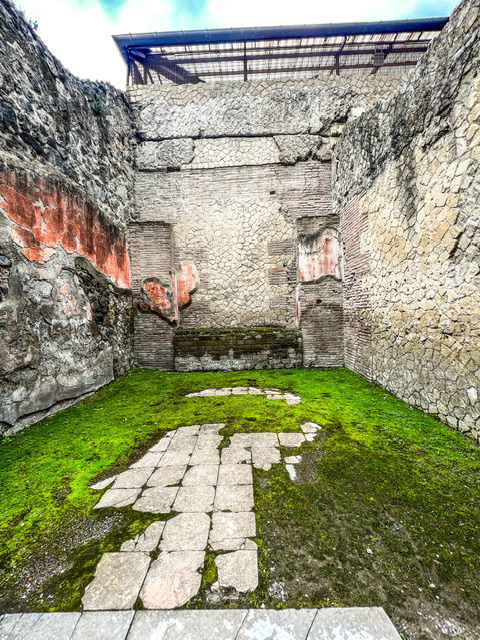
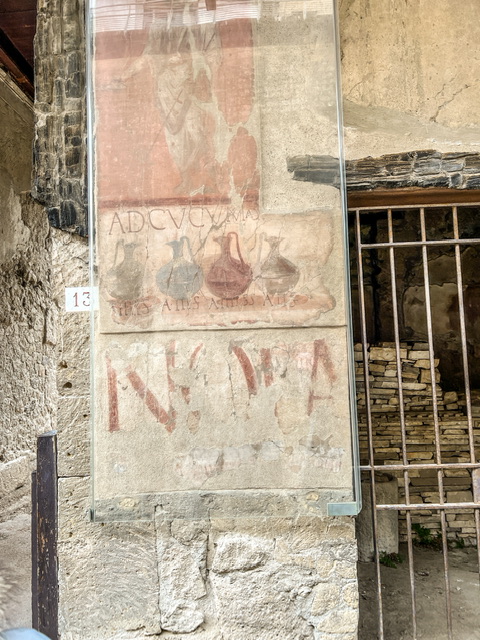
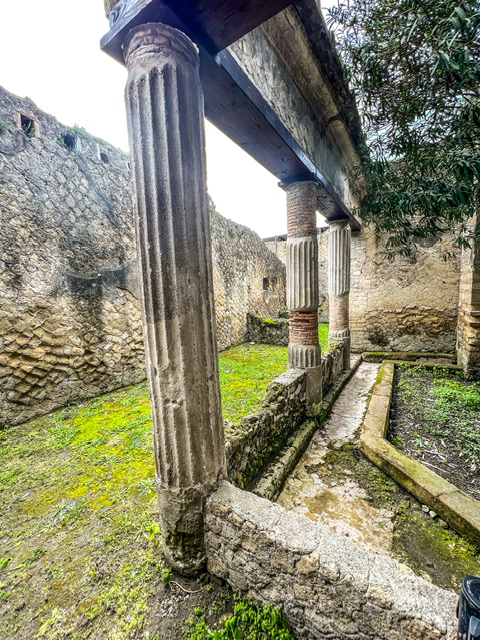
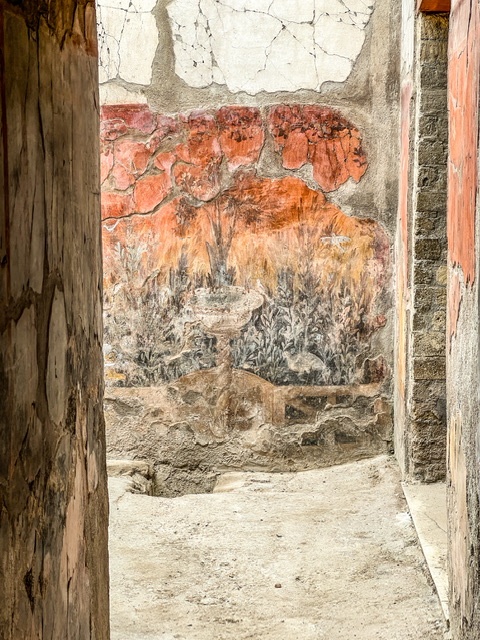
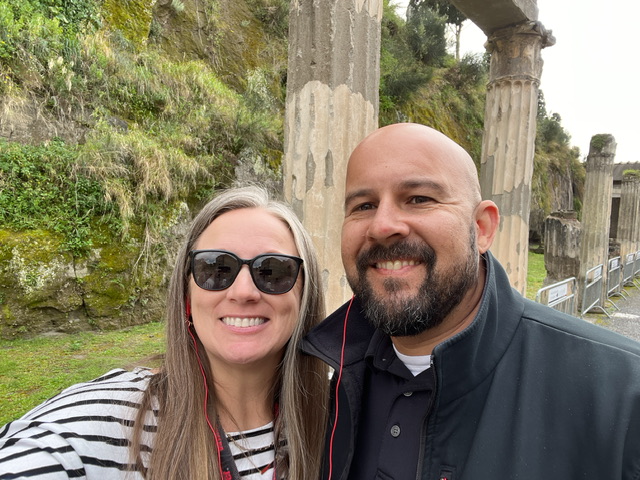
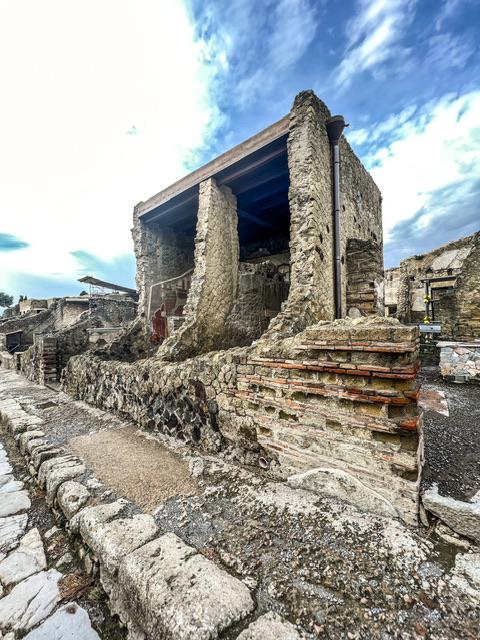

Visit Plebiscito Square
Plebiscito Square is another iconic place in Naples. Due to its vastness (25,000 sqm), it often hosts events and concerts, like, for instance, the New Years Eve concert happening every year
The square is divided into two parts: one has the Cathedral of San Francesco di Paola, from the 19th century, resembling a mix between Rome’s Pantheon and Saint Peter’s Cathedral, while the other features the Royal Palace. The Royal Palace was the house of four royal families (Spanish, Austrian, Borbone, and Savoia), and has been converted to the National Library and museum of the royal collections. You can see the white balcony in the middle of the Royal Palace where royalty addressed the citizens.
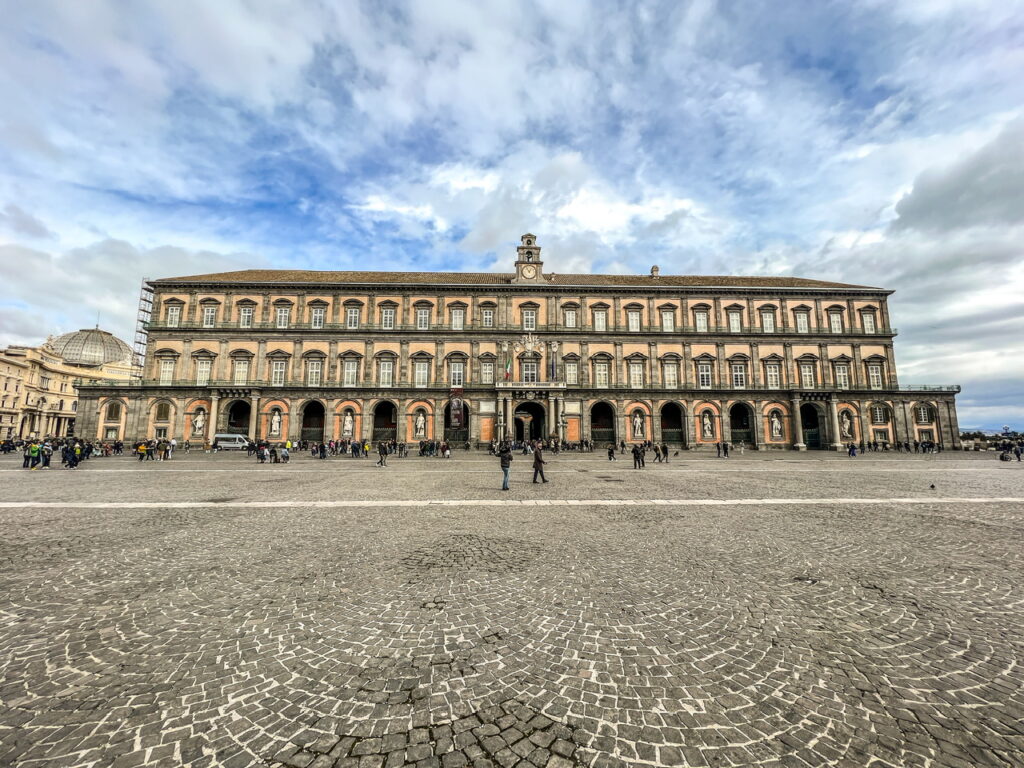
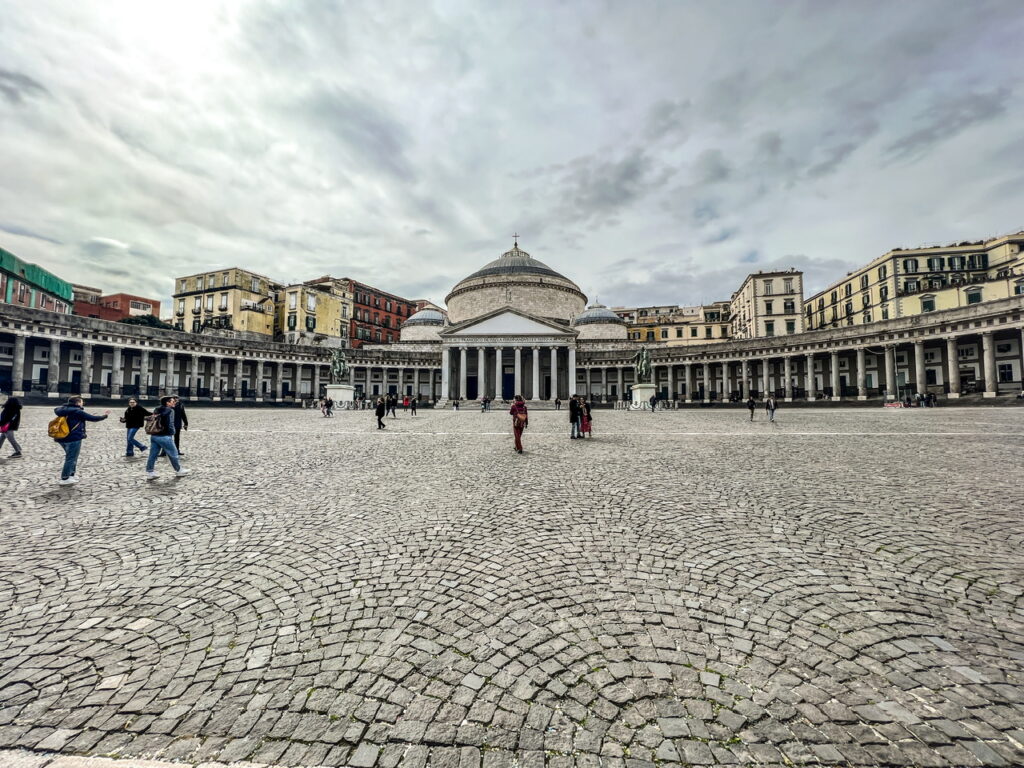
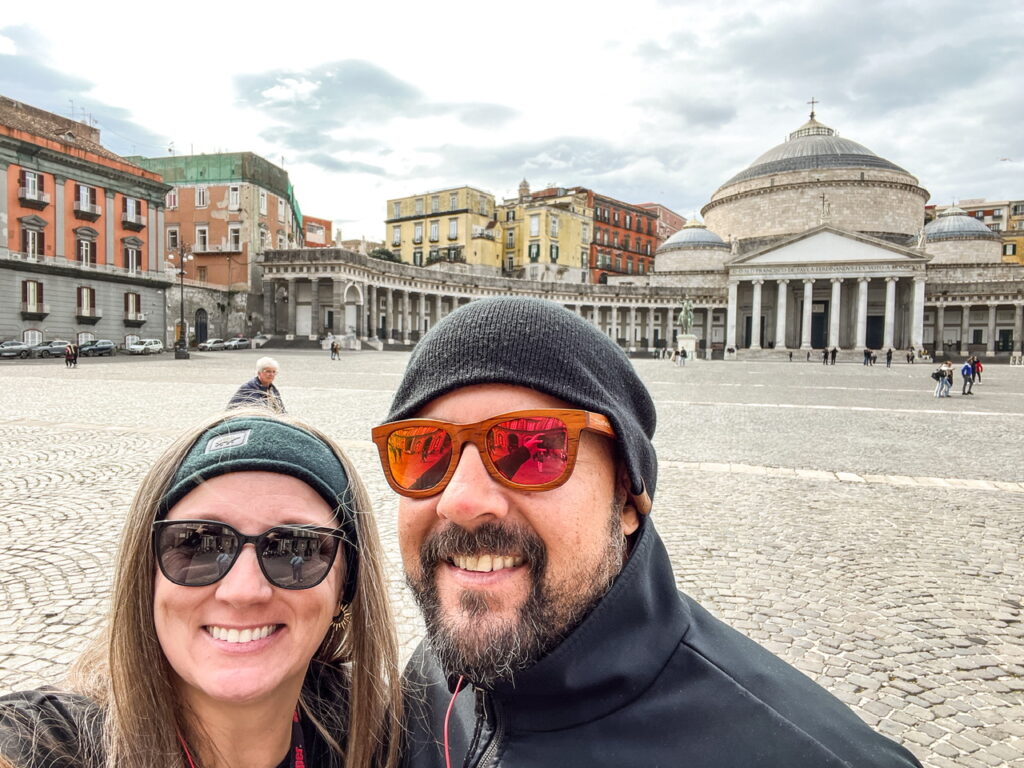
Be awed by the Toledo Metro Station
There are a few metro stations in Naples that were conceived as artistic expressions, but Toledo is the most popular and has been listed as one of the best subway stations in Europe. The project is organized on four levels, the deepest being 50 meters underground.
There are hundreds of square meters of mosaics, and the most photographed is the one which uses ceramics of different shades of blue to re-create a sort of underwater realm. We did not make it here on this trip, but based on reviews and photos, if you’re on the subway for any reason, the Toledo Metro Station should not be missed.
Galleria Umberto Primo
This monumental commercial hub was established at the end of the 19th century, and you can’t skip it, as the entrance is free, and it’s a delightful place to check out. The designers of the gallery conceived it as a place where common people could gather and spend their leisure time. Four high buildings are connected by four tunnels topped with artistic glass installations culminating in a glass dome. Inside the gallery at Christmas time, there’s a huge Christmas tree where Naples’ citizens hang notes with their wishes.
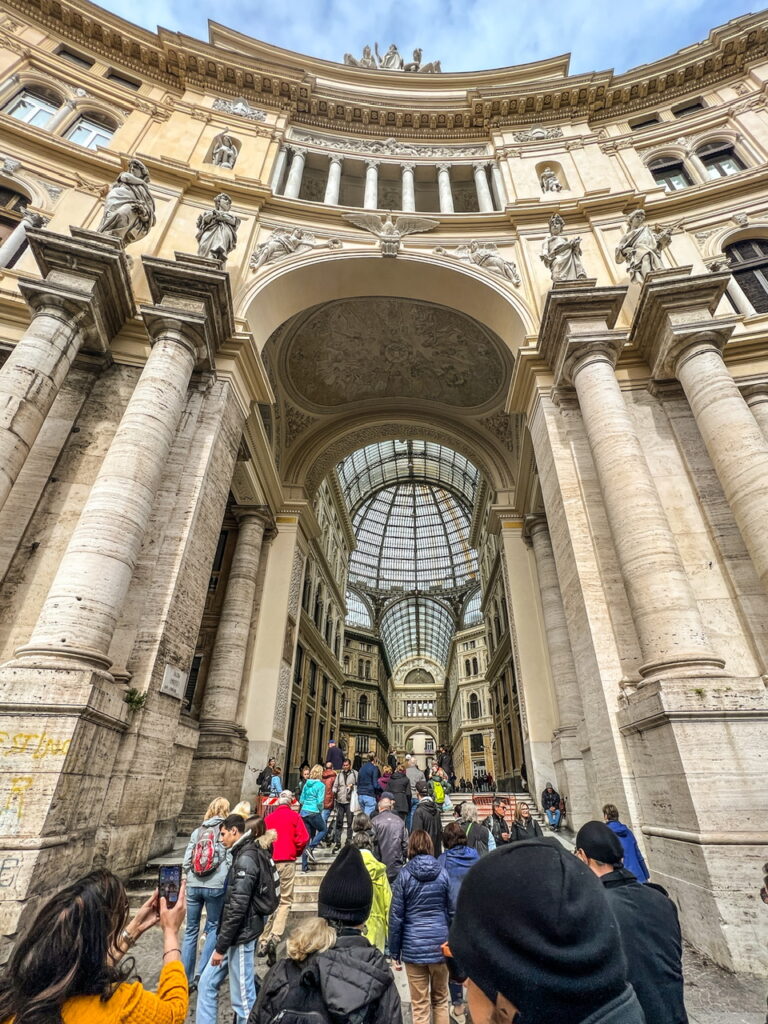
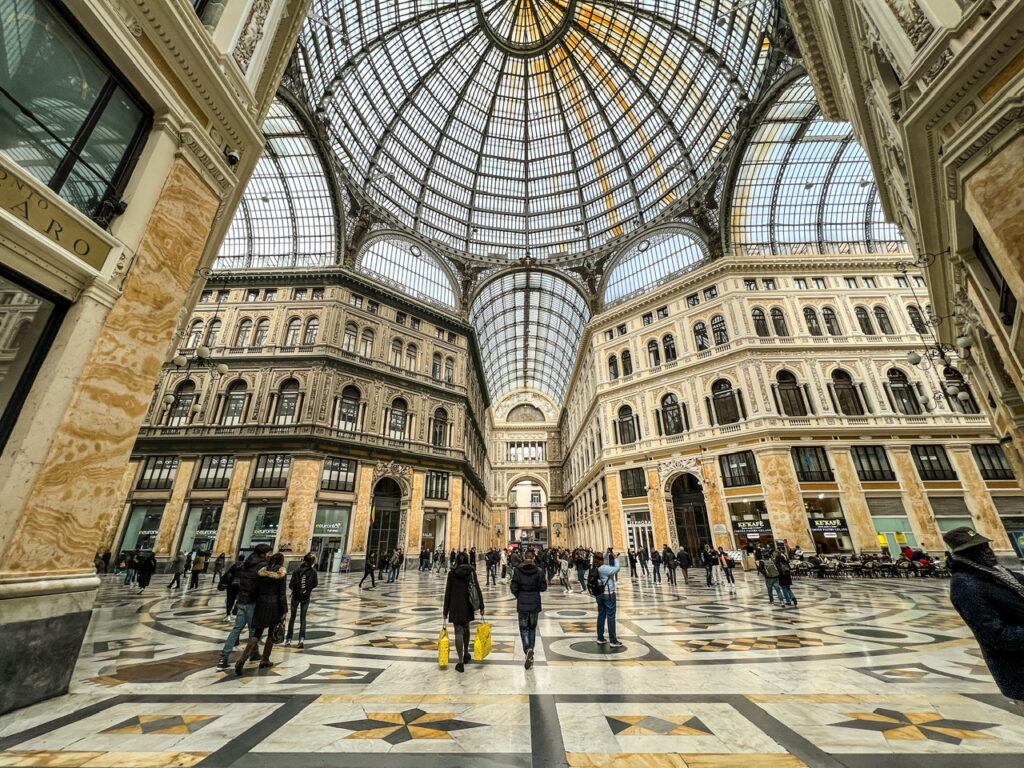
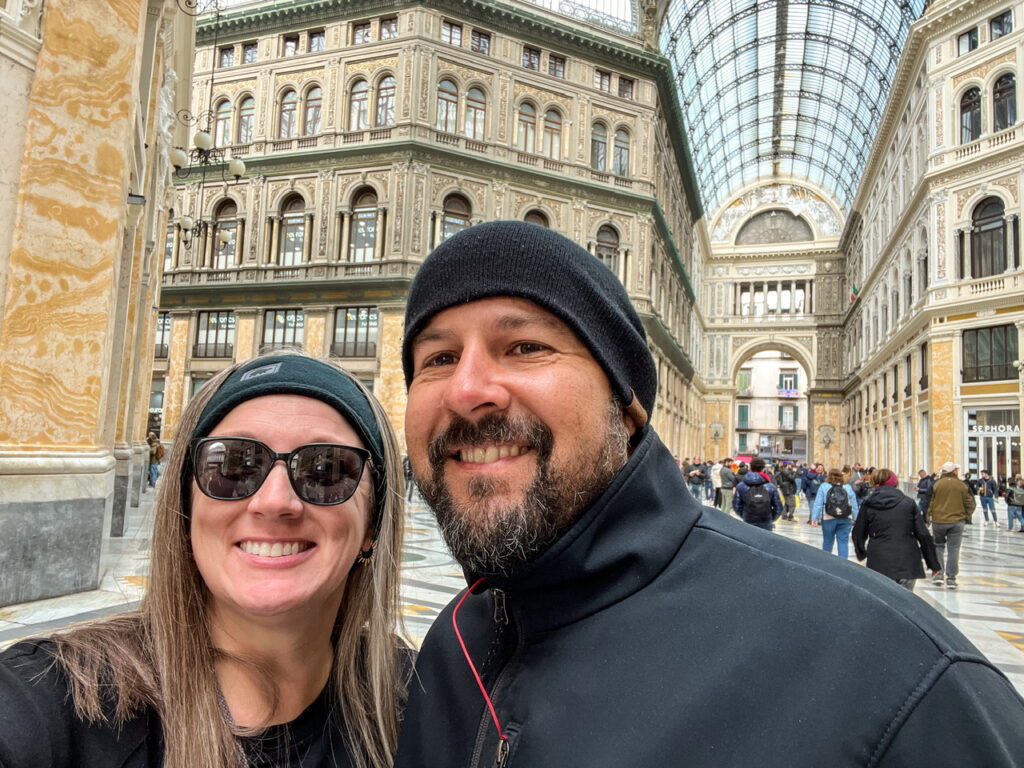
Cathedral of San Gennaro
The cathedral is commonly referred to as the Cathedral of Naples because it’s the main religious center in the city. The Neapolitans have venerated Gennaro in an uninterrupted cult from the time of his martyrdom at the hands of Emperor Diocleziano to the present. The cathedral holds the blood of the saint and vestiges of his skull, the building having a prominent role in Naples and Neapolitans’ spiritual life. Each year at fixed dates in May, September, and December, the priest pulls two ampoules containing the blood from the shrine inside the cathedral and exhibits them to the crowds of devotees.
Believe it or not, most times the blood changes its consistency from solid to liquid in front of the audience, perpetuating the tradition of the miracle of Saint Gennaro’s blood. This ritual confirms the devotion of the city towards its protector. It is said that if the blood does not change to liquid, there will be a bad omen over the city the following year. Our tour guide said that the blood didn’t turn to liquid in 2019, then the horrendous COVID-19 hit the world; as like other years where the blood didn’t change, other bad circumstances came over the city.
If you can’t be there in time for the miracle, be happy with the fantastic Museum of the Treasure of Saint Gennaro, which is accessible from the cathedral, and showcases all the wonderful jewels, art pieces, golden and silver sculptures donated by powerful benefactors over the centuries.
Try Street Food of Naples
Eat Cuoppo
Cuoppo is a delicious street food that you can find inside shops in Naples and is characteristic of the city overlooking the sea. Naples’ cuoppo consists mostly of breaded fried seafood, like octopus, shrimp, and calamari, served in a paper cone. Be sure to ask if it is seafood, because they sell other Cuoppo that has other fried Italian snacks of just fired dough and fried potatoe croquettes and such.
Eat Sfogliatella
Sfogliatella is the most popular dessert in Naples; it is usually enjoyed with coffee for breakfast. As the story is told, the very first sfogliatella was created by chance in a nunnery on the Amalfi Coast back in the 18th century. It soon found its way to the center of Naples, where you can now enjoy it at every cafe. There are two types, one shown below and the other is more of a sphere shape. Cuori di Sfogliatella sells these near Piazza Girabaldi.
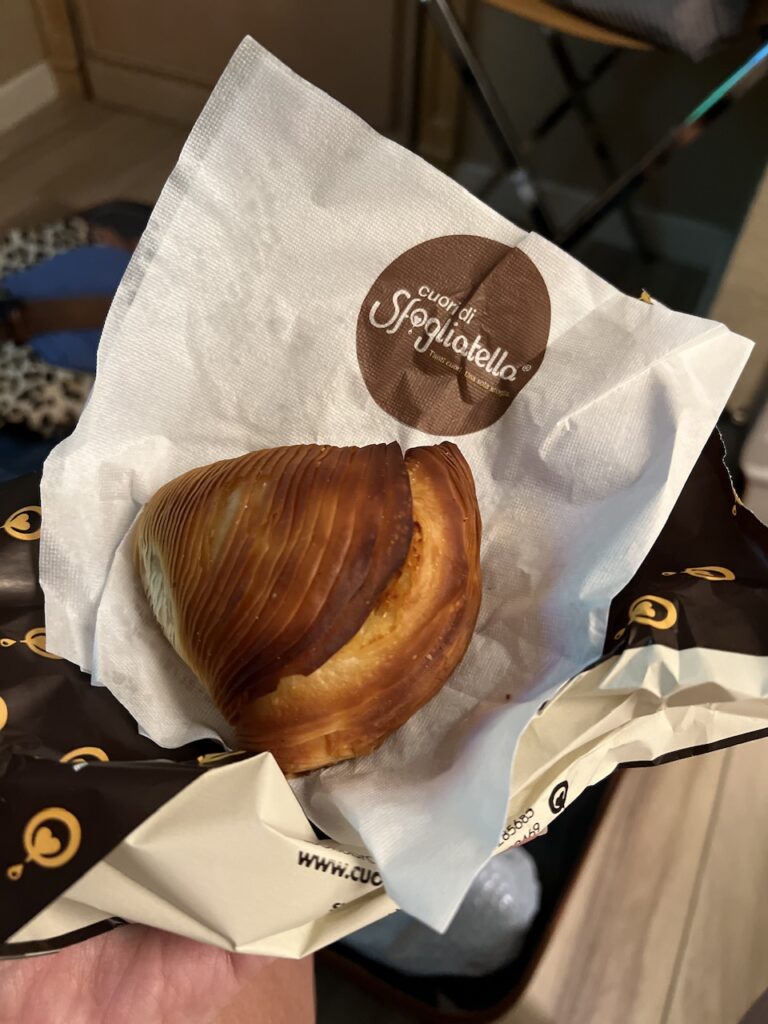
Eat pizza
Naples is the birthplace of pizza, so you can’t leave without trying a slice (or several!). Head to a pizzeria and order a Margherita pizza, which is topped with tomato sauce, mozzarella, and basil. Want to know where the Margherita pizza got its name?
June 11, 1889, when the Italian King Umberto I and Queen Margherita di Savoia visited the city, the Queen ordered Raffaele to make her some local dishes. Baker Raffaele Esposito topped the pizza with the colors of the Italian flag: red (tomatoes), white (mozzarella cheese), and green (basil). The queen favored this pizza so he named it the Margherita in honor of the queen.
The best pizza in Naples is said to be found at L’antica Pizzeria Da Michele. Don’t be surprised to find a long line and a wait from 45 minutes to 1 hour and 30 minutes to get in. Julia Roberts was seen eating pizza here in the movie “Eat, Love, Pray”. The brand has even expanded globally to Toyko, Barcelona, London and Los Angeles.
L’antice Pizzeria Da Michele Address: Via Cesare Sersale, 1, 80139 Napoli NA, Italy
There are however hundreds of pizzerias in Naples, do some research and find one that is close to where you are staying or one along your adventurous path throughout the city. The pizzerias that were closest to where we stayed while in Naples were Attanasio and Amoroso dal 1876; we stayed in Piazza Giribaldi at Starhotel Terminus. You hotel concierge or tour guide can lead you to the best in the area you are exploring.

Try some of the foods that Naples is known for
If you’re looking for something more substantial, try some of Naples’ famous seafood and pasta dishes. The city is located right on the sea, which means that fresh seafood is always on the menu, especially fritture di mare (fried seafood). Pasta dishes, such as spaghetti alle vongole (spaghetti with clams) and pasta e fagioli (pasta with beans), are also popular and delicious.
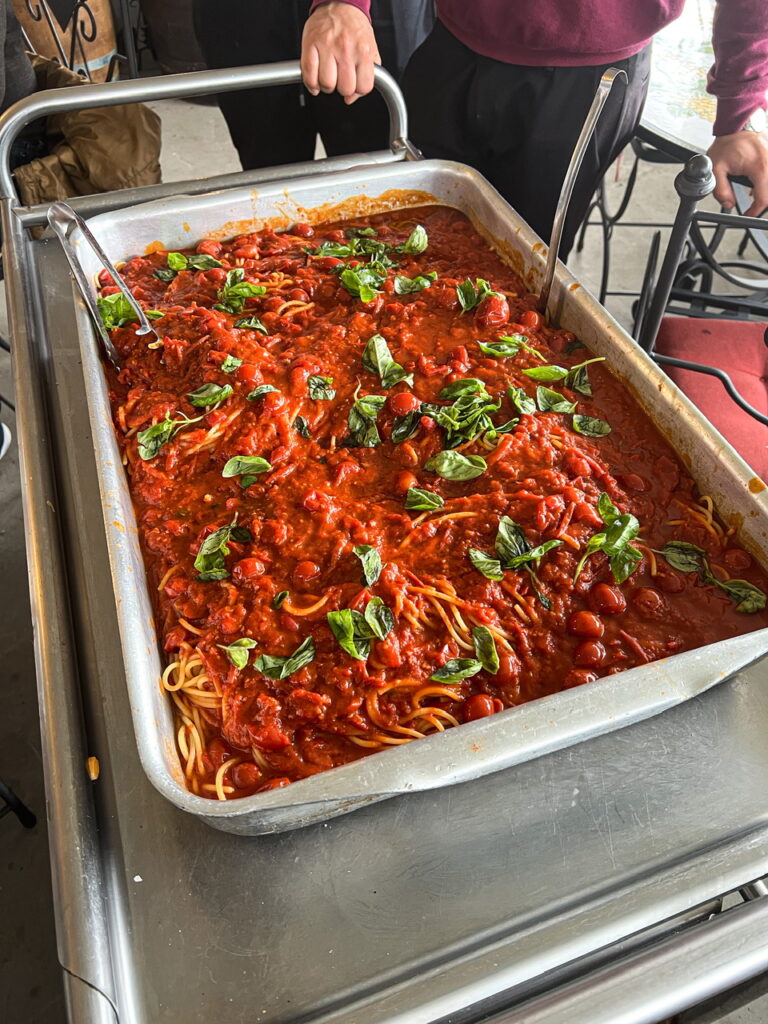


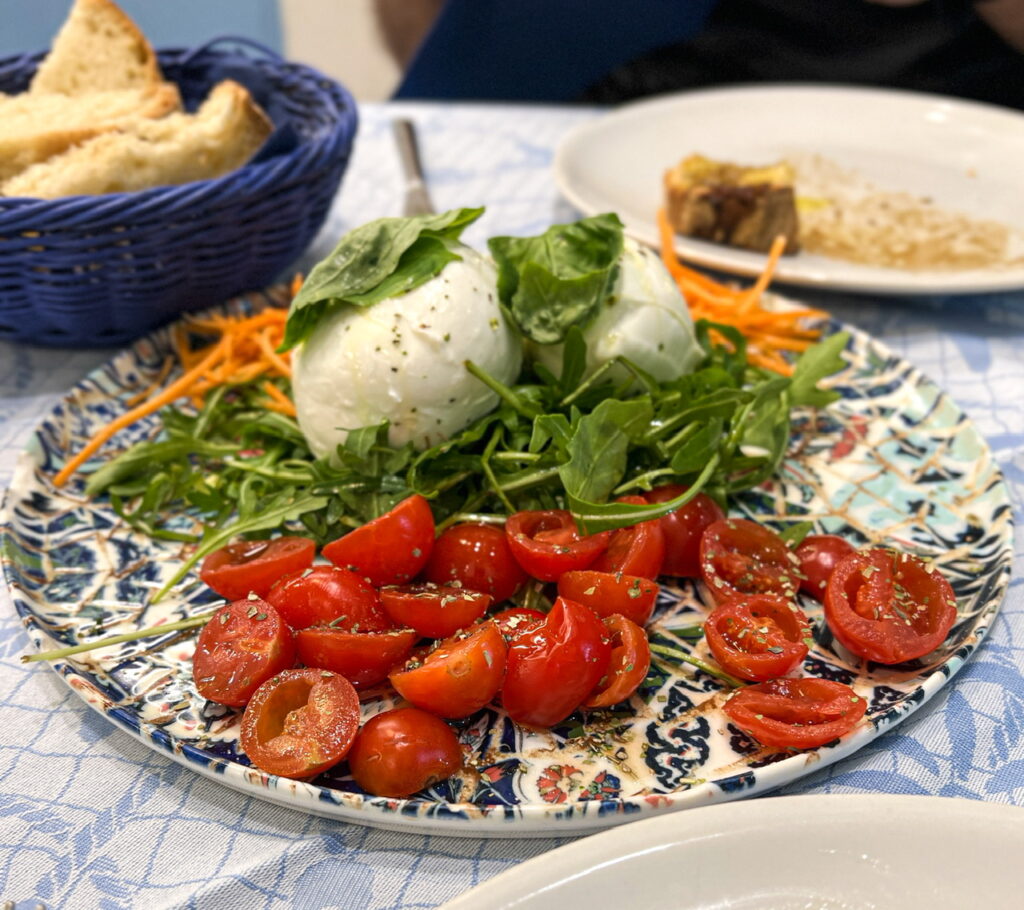

Explore the historic center
Naples’ historic center is a UNESCO World Heritage Site, and it’s easy to see why. The narrow streets are filled with stunning Baroque architecture, churches, and bustling markets. It is one of the oldest continuously inhabited urban areas in the world dating back to century 8 BC. Some of the places to see in the historic center are the Royal Palace, the New Castle, the Egg Castle and numerous other landmarks and attractions.
Visit the National Archaeological Museum
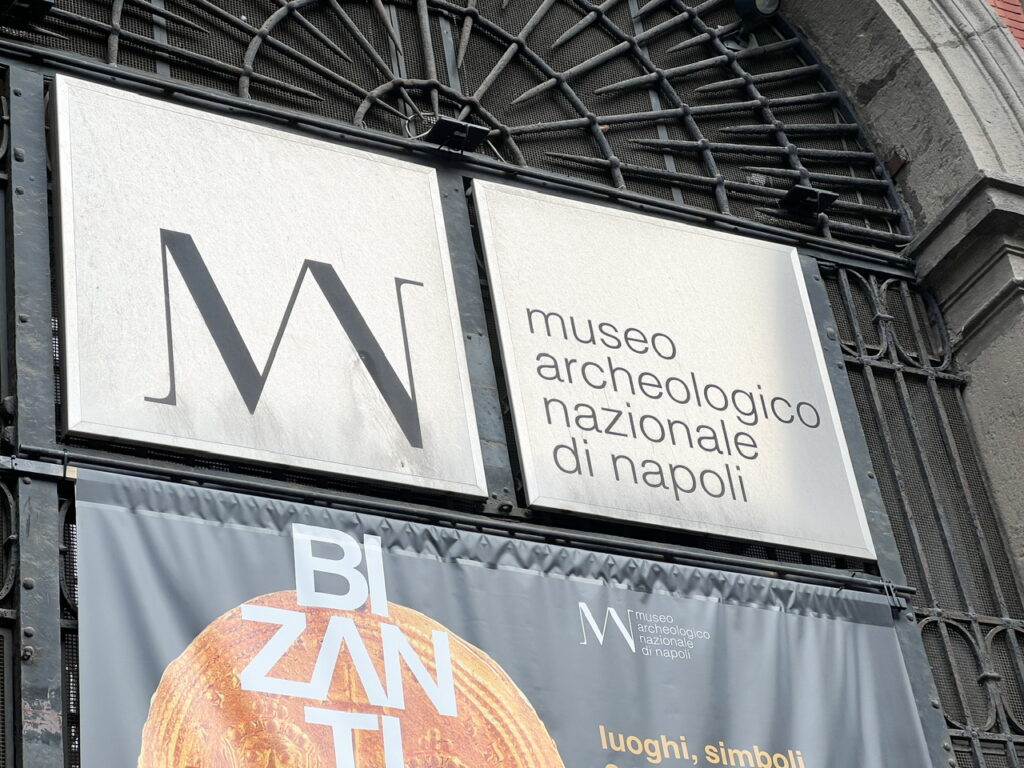
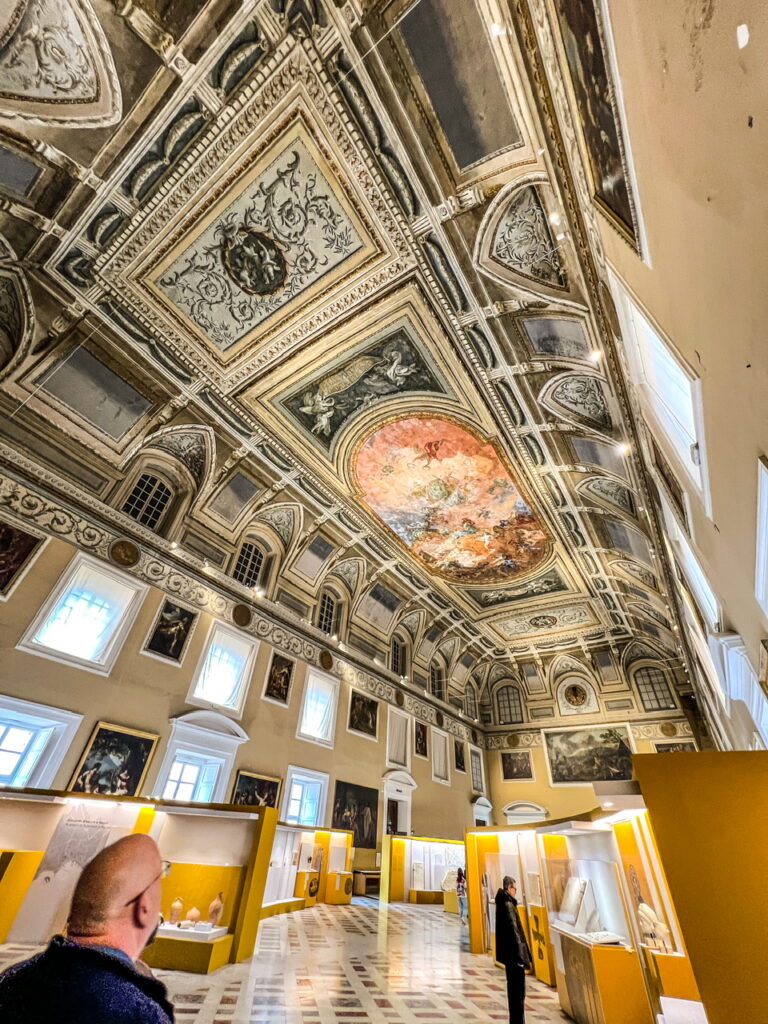
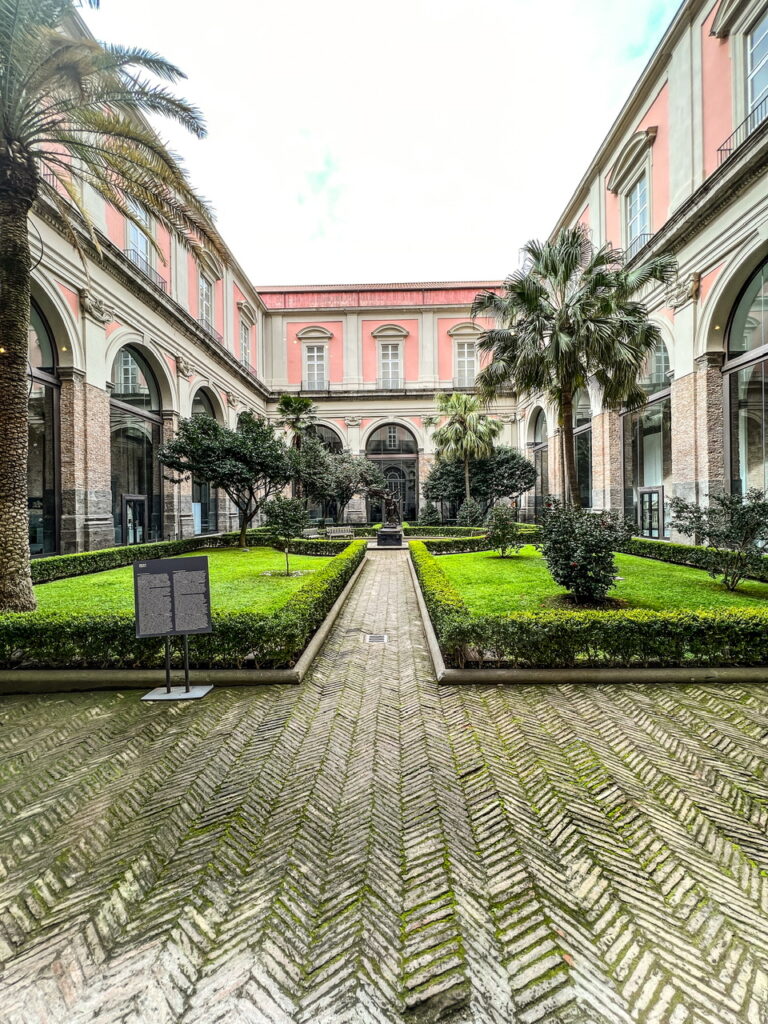
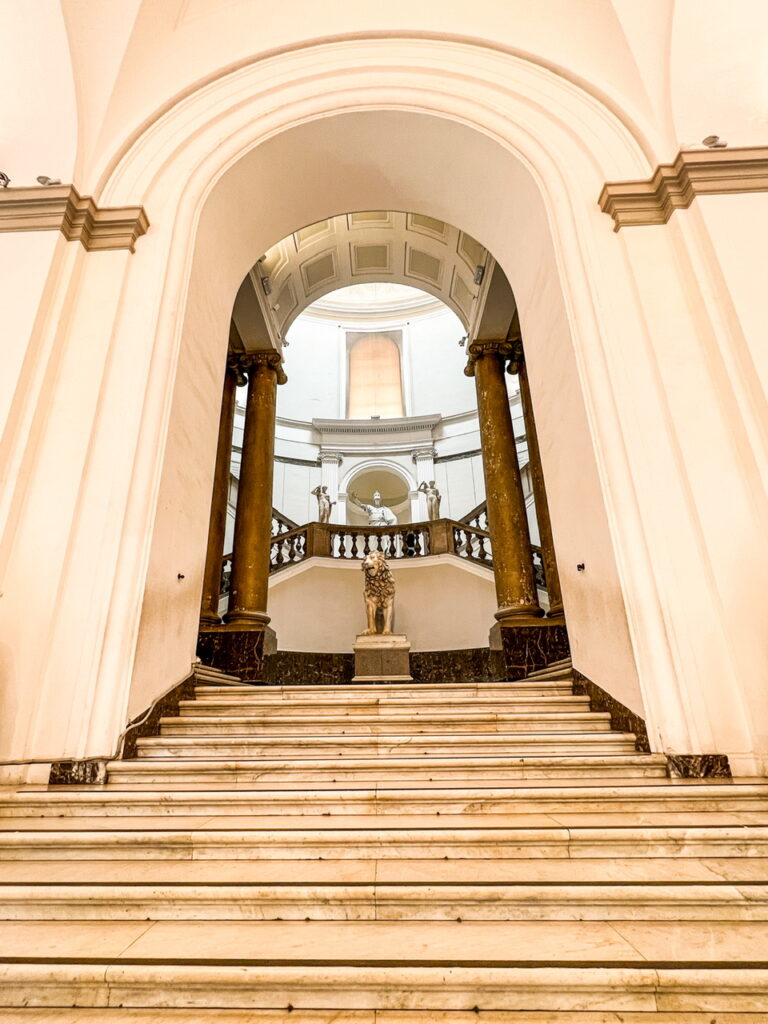
This museum houses one of the world’s finest collections of Roman and Greek antiquities, including mosaics, sculptures, and artifacts from Pompeii. Seeing the artifacts from Pompeii was truly amazing and leaves you wondering how some of the items withstood the mud, ash and rocks from Mt Vesuvius’ eruption; the following photos are some that are on display there:
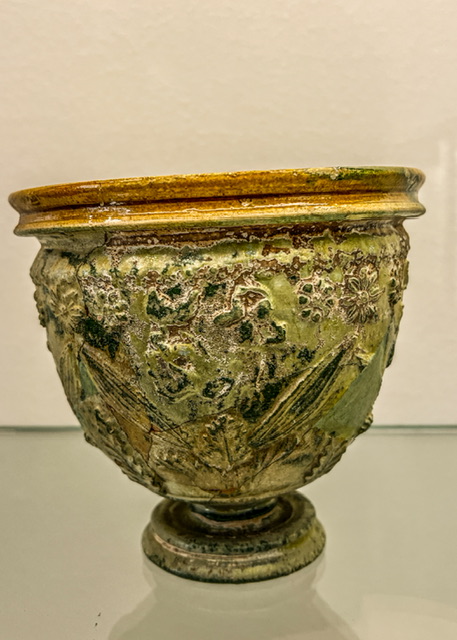
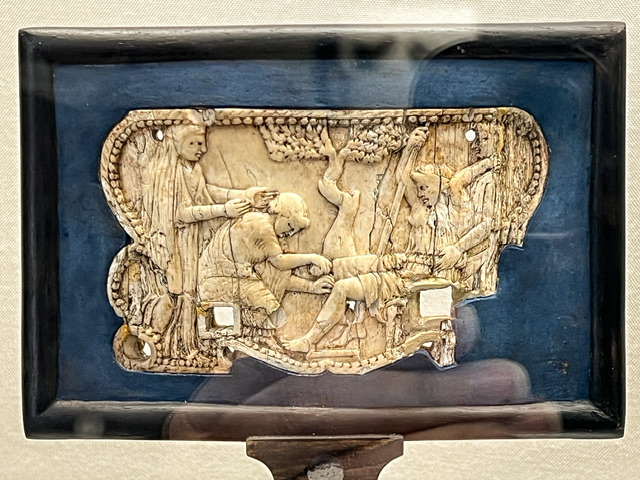
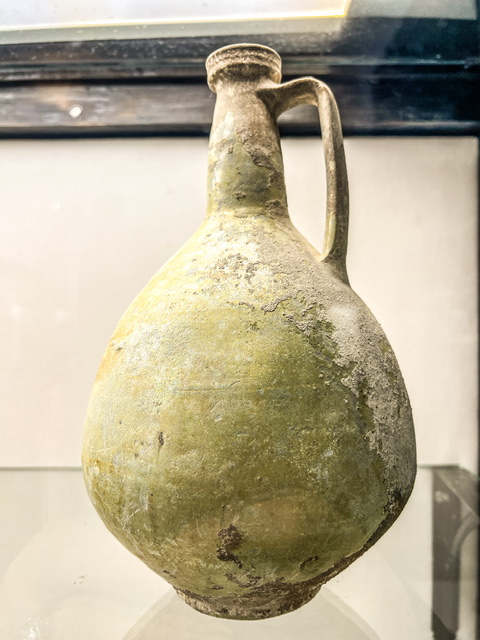
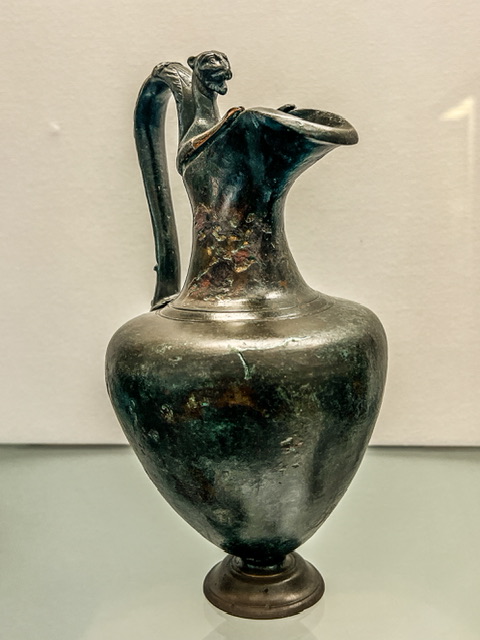
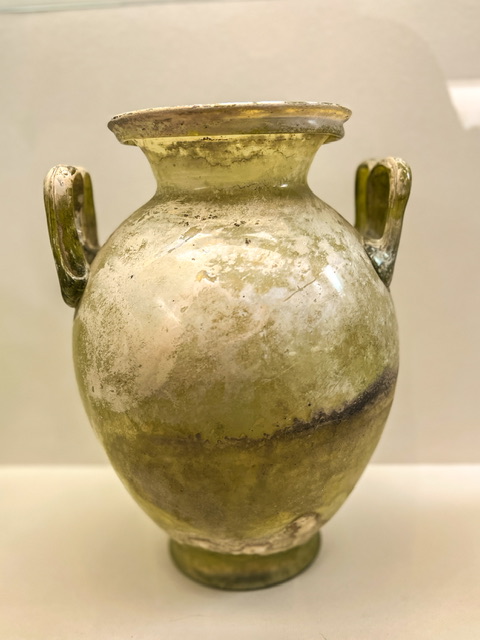
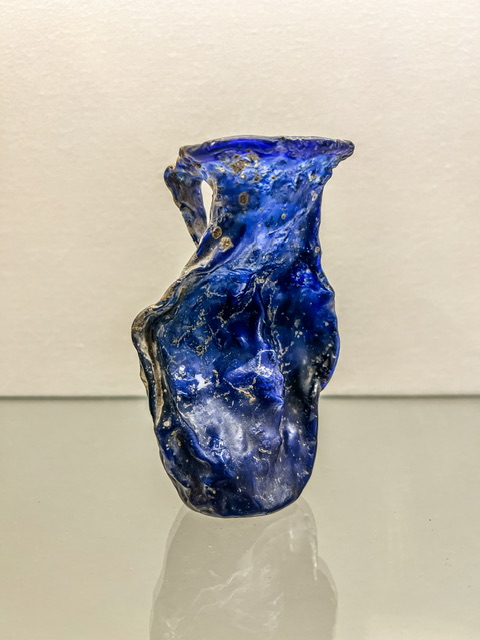
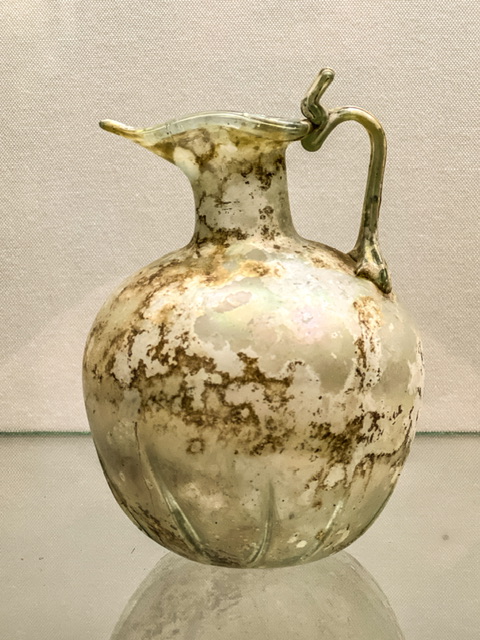
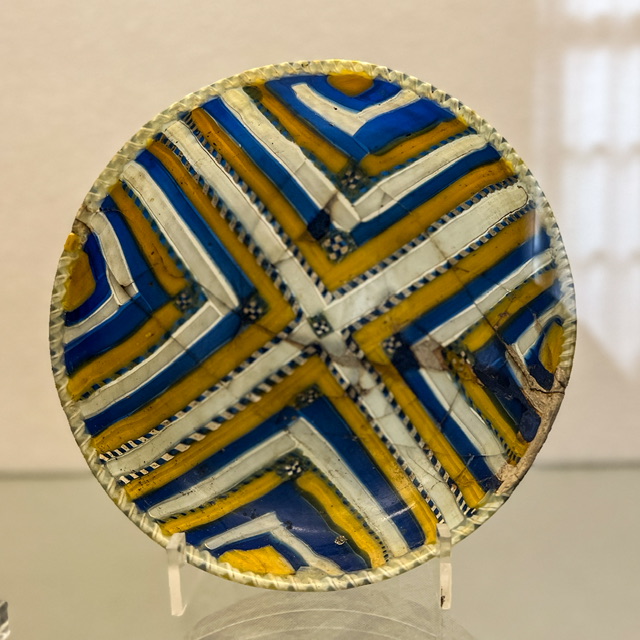
Here are photos of the sculptures:

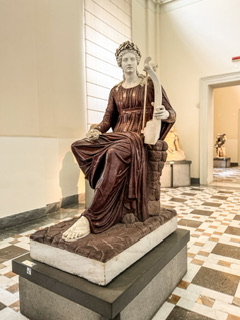
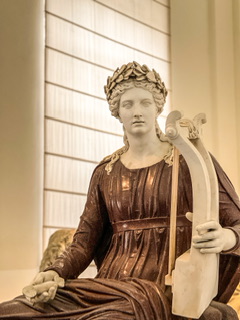
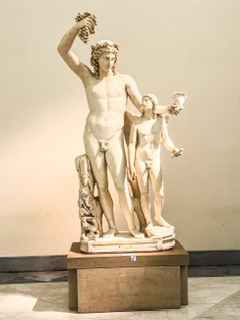

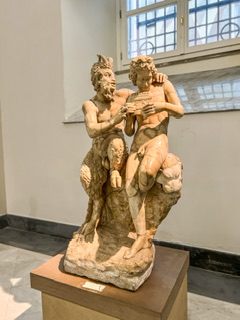
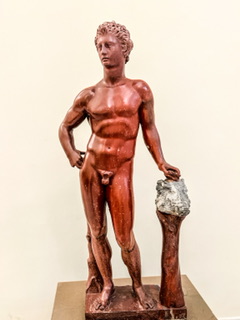
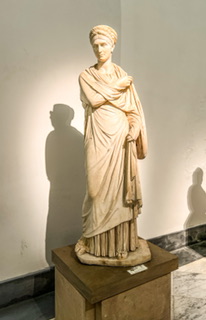

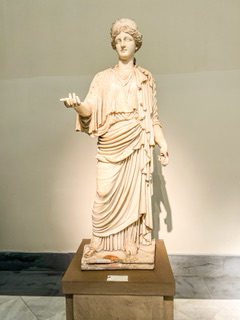
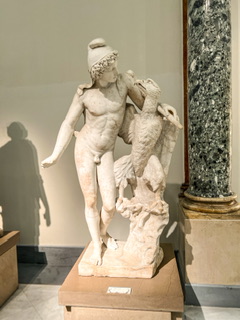

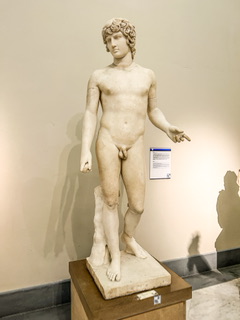
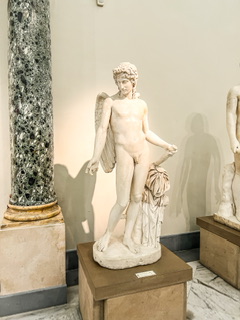
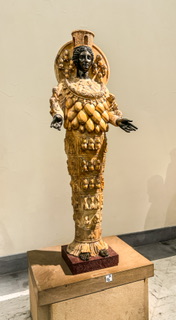
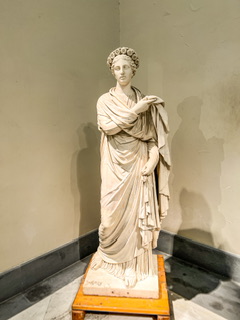

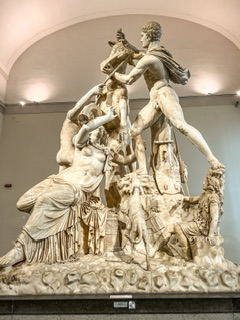
The mosaics were stunning and will leave you in thought on how they could have possibly made these intricate designs thousands of years ago.
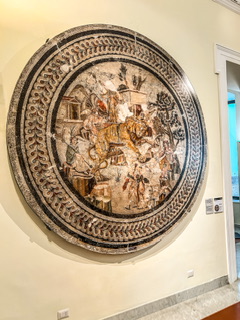
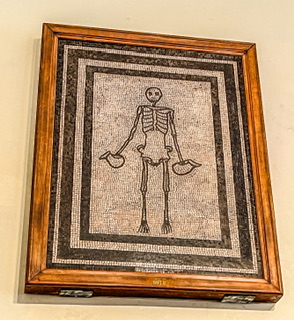
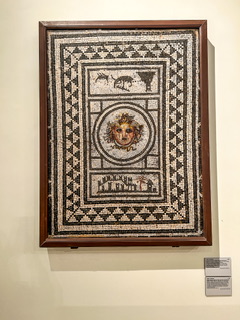
Climb Mount Vesuvius
If you’re feeling adventurous, take a trip to Mount Vesuvius, the still-active volcano that destroyed Pompeii. You can hike to the crater and take in the stunning views of the Bay of Naples. You can book a tour here. We only spent two nights in Naples and sadly didn’t get a chance to hike Mt Vesuvius, but if you are in to hiking and have the time, we recommend you check this out!
Visit the Castel dell’Ovo (Egg Castle)
This castle sits on an islet in the Bay of Naples and is said to be the oldest standing fortification in Naples. It offers beautiful views of the bay and is a popular spot for a stroll. According to the legend, the ancient Roman poet Virgil hid a magic ostrich egg in the castle dungeon. This egg had the power to protect the entire fortress. If it broke, Castle and Naples would have been destroyed. This is the oldest castle in Naples.
Visit Castel St’Elmo
The majestic fortress of Castel St’Elmo looks down imperiously over the entire city of Naples. Located at the top of Vomero Hill, it affords an extraordinary views which stretch from the hinterland to the islands and from the Sorrento Peninsula to the Phlegraean Fields. You can walk around the top of the castle to get 360 degree views of the city; truly amazing!
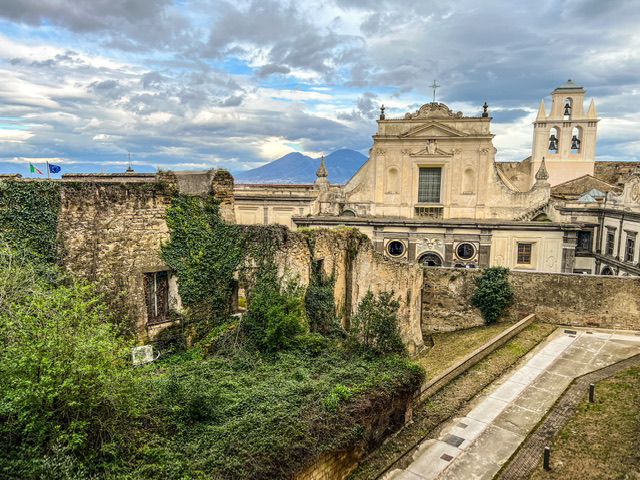
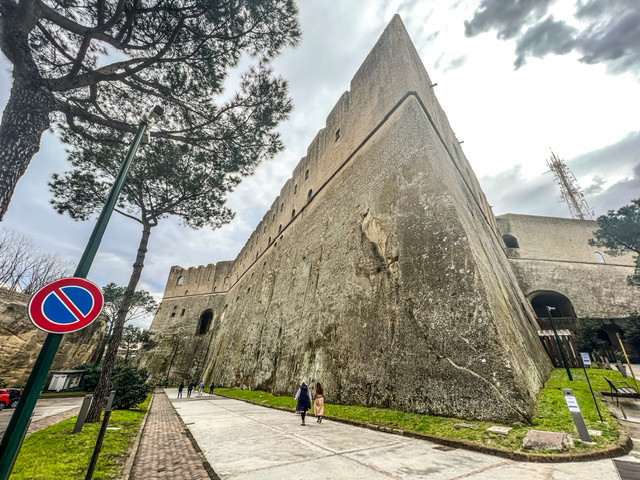
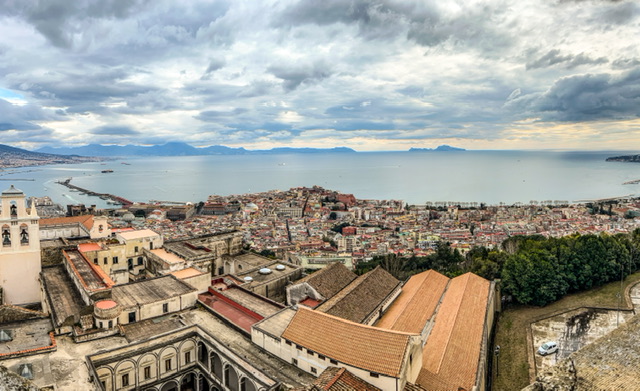
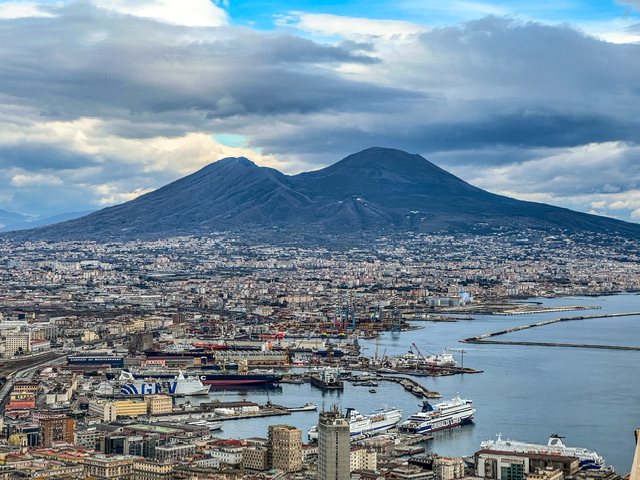
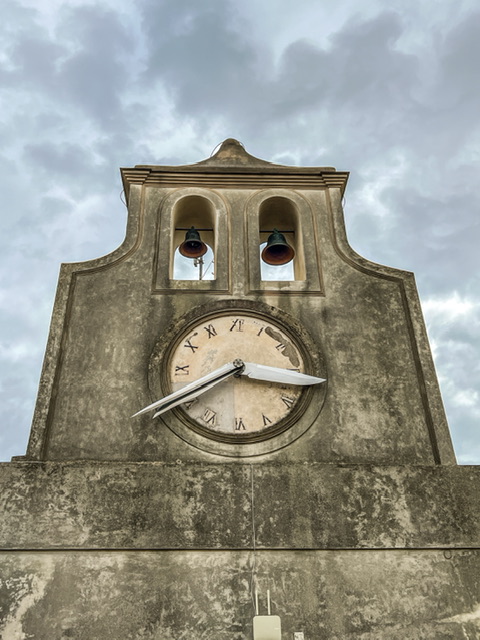
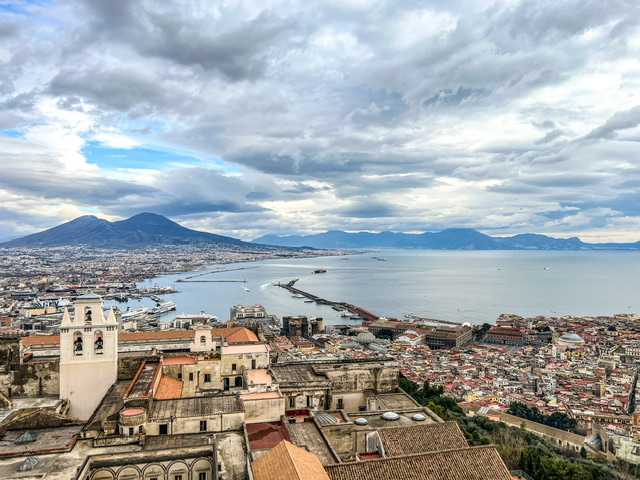
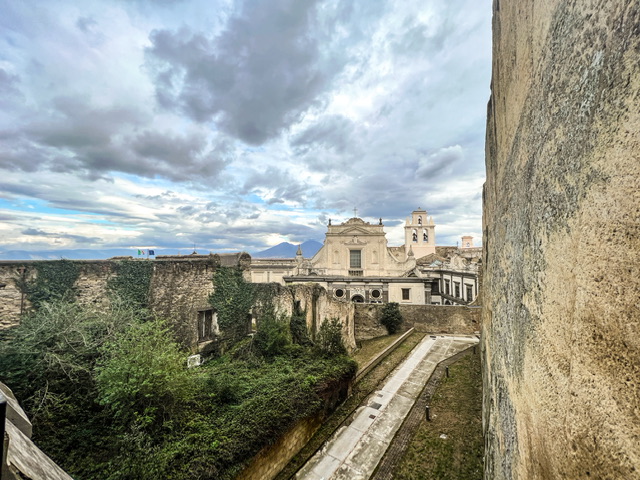
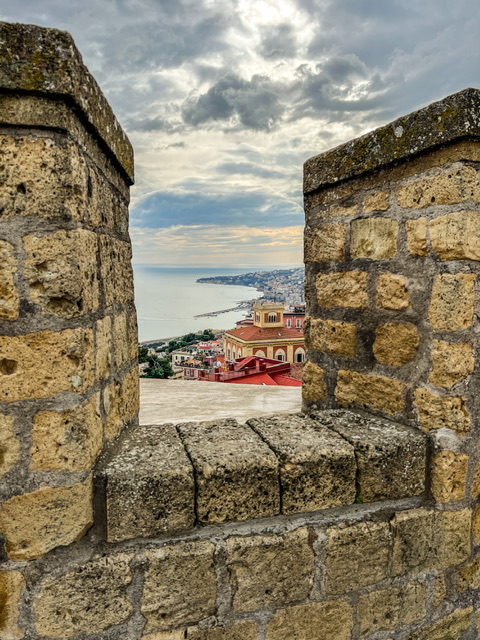
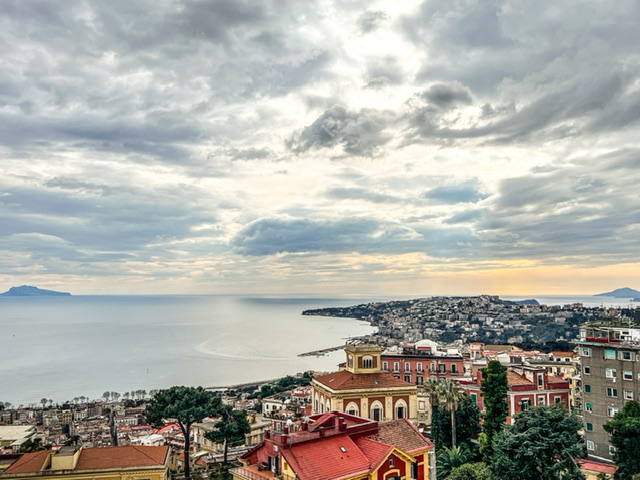
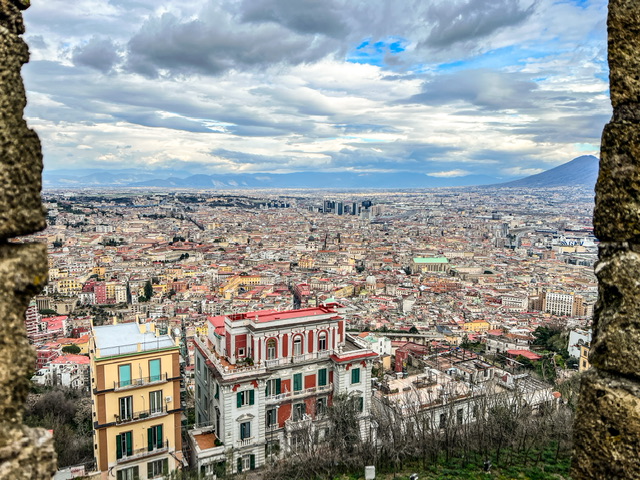
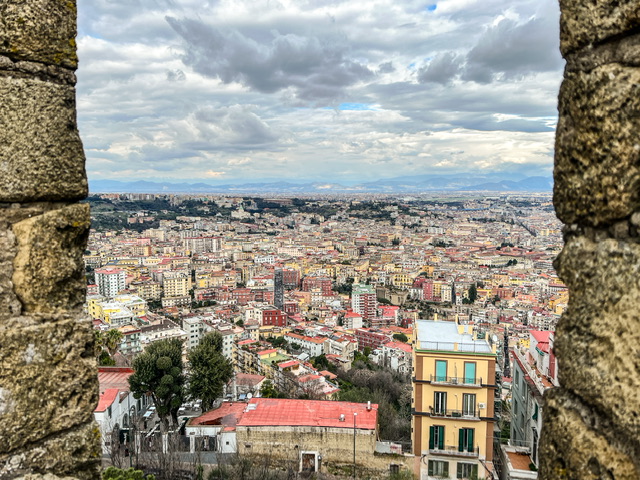
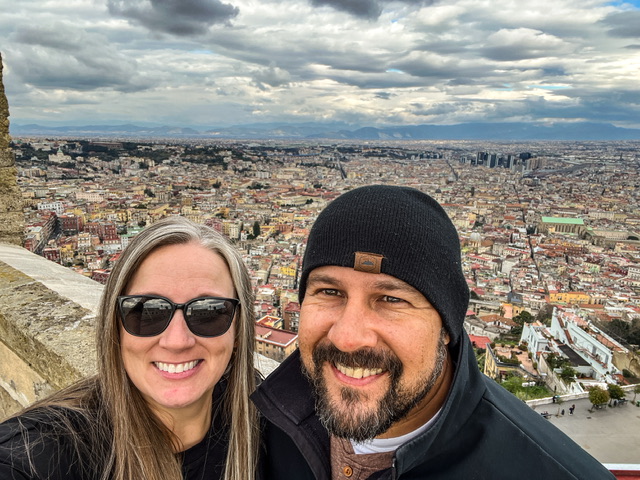
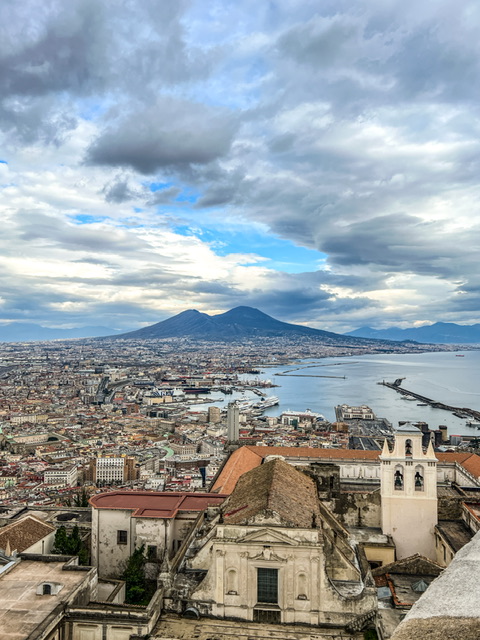
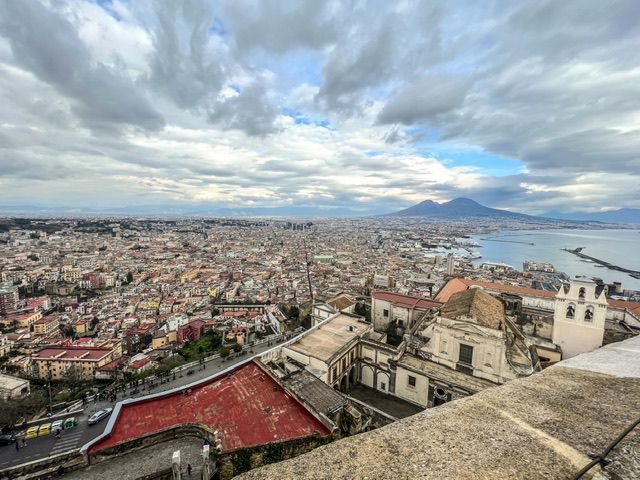
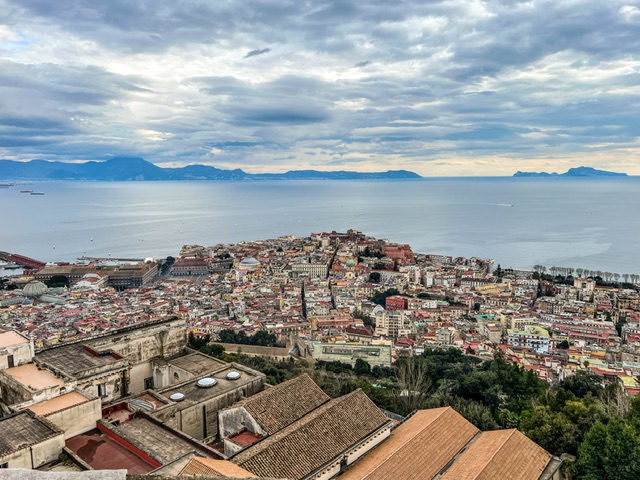
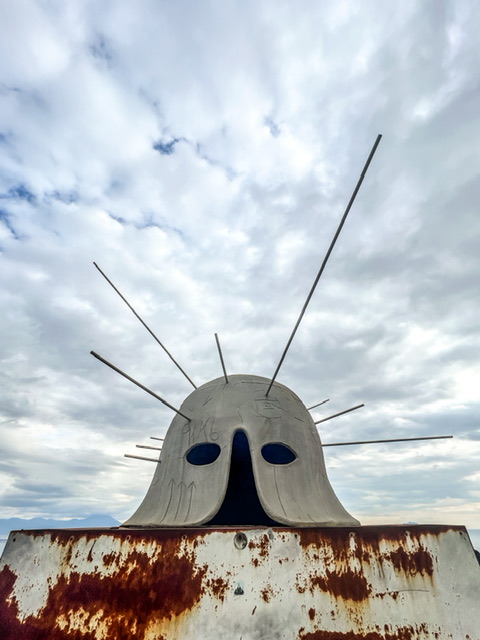
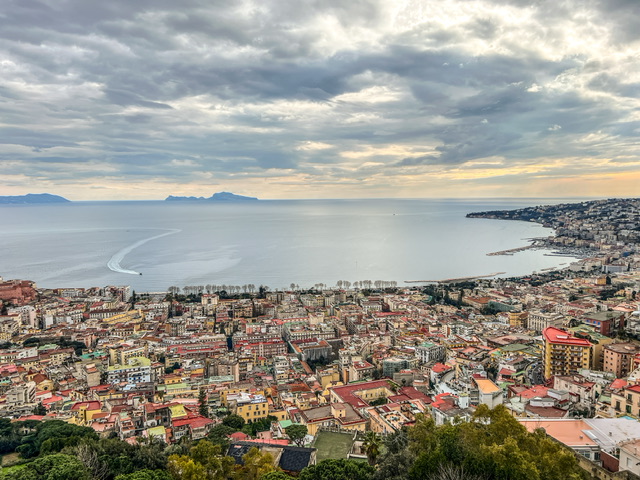
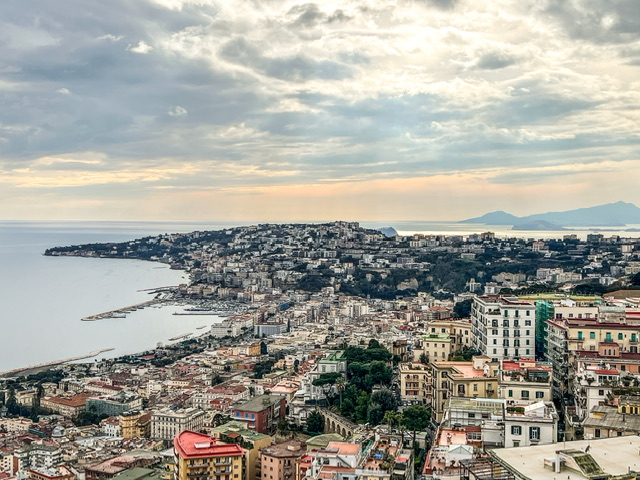
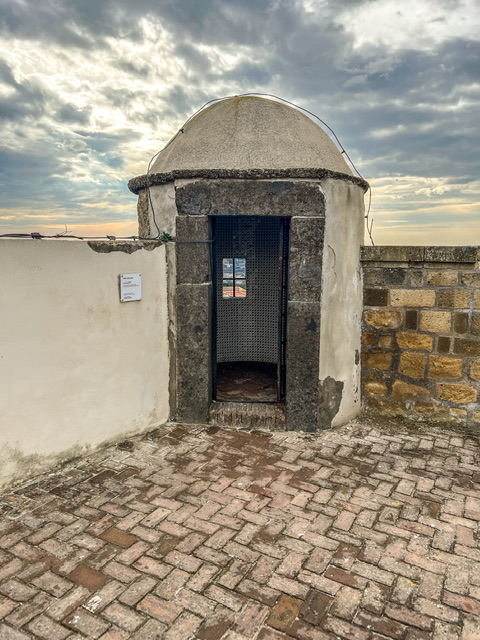
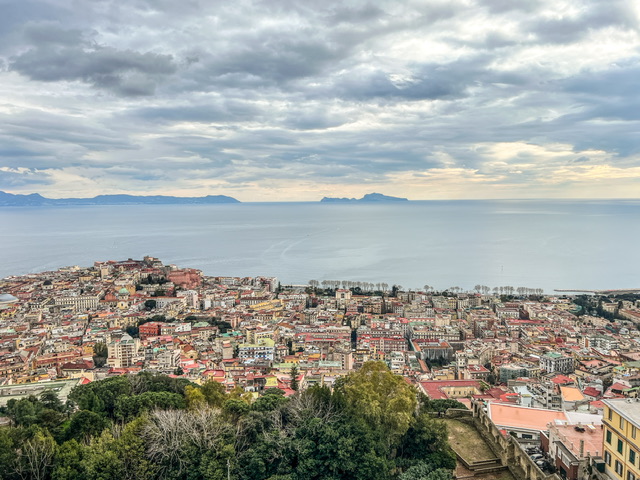
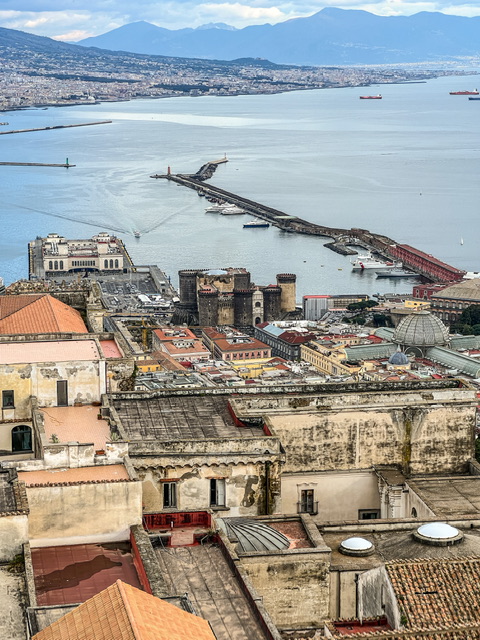
Visit Castel Nuovo (New Castle)
Castel Nuovo is one of Naples’ most striking buildings, so no trip to Naples would be complete without a stroll around its towering walls. The castle also offers excellent views over the Bay of Naples. The castle was called New to distinguish it from those castles that already existed. Its construction dates from the end of the 13th century (around 1279).
Take a stroll along the Lungomare
This scenic waterfront promenade stretches along the Bay of Naples and offers stunning views of Mount Vesuvius and the sea. These photos are from along the Lungomare.
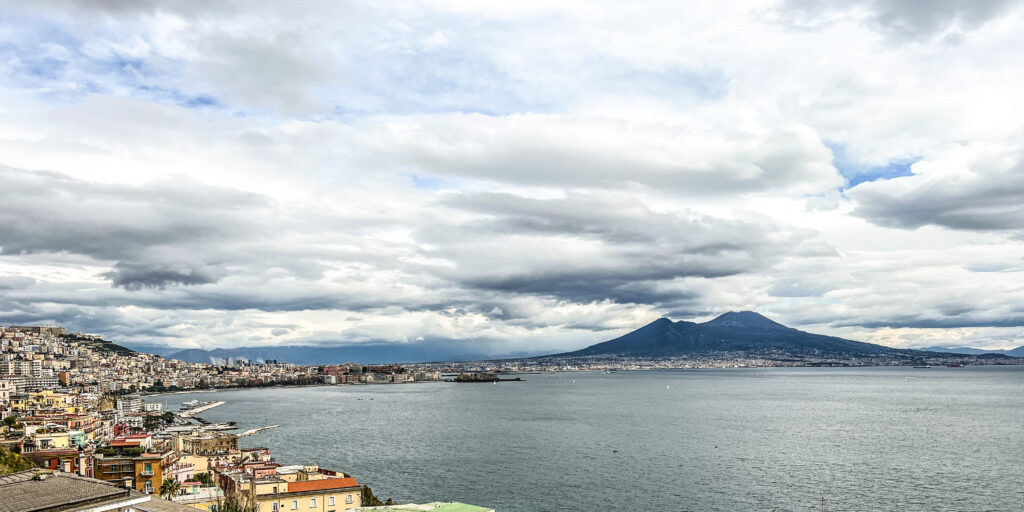
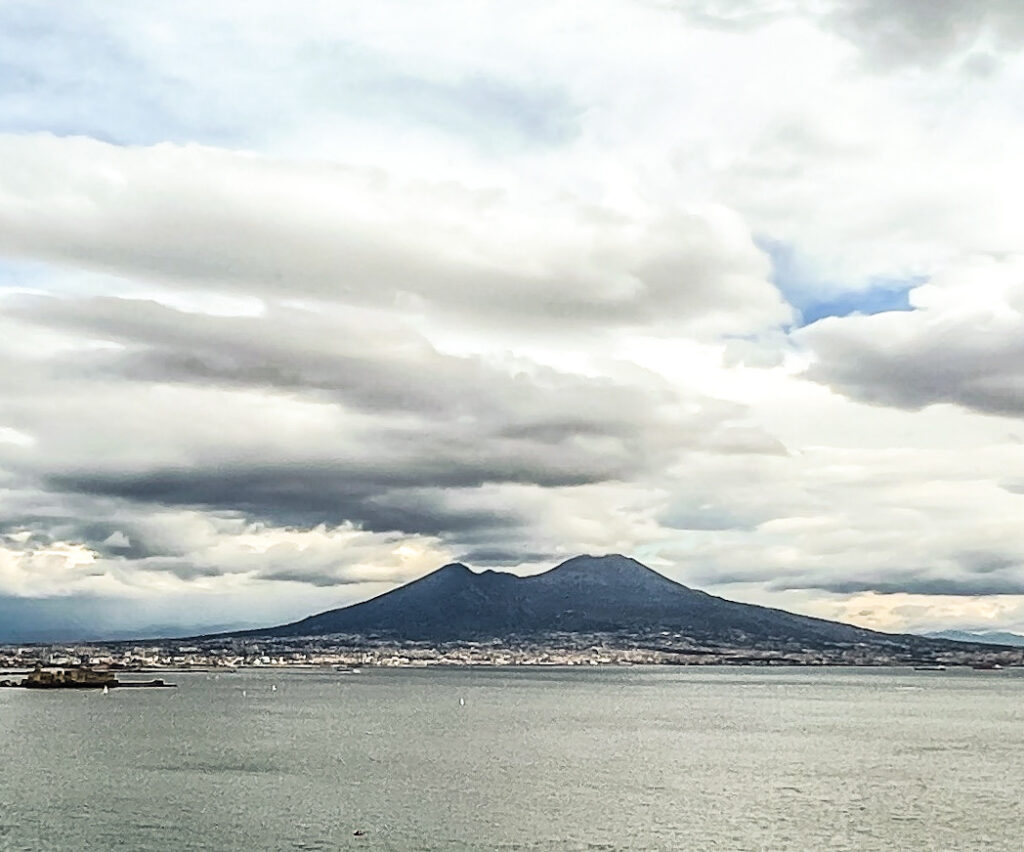
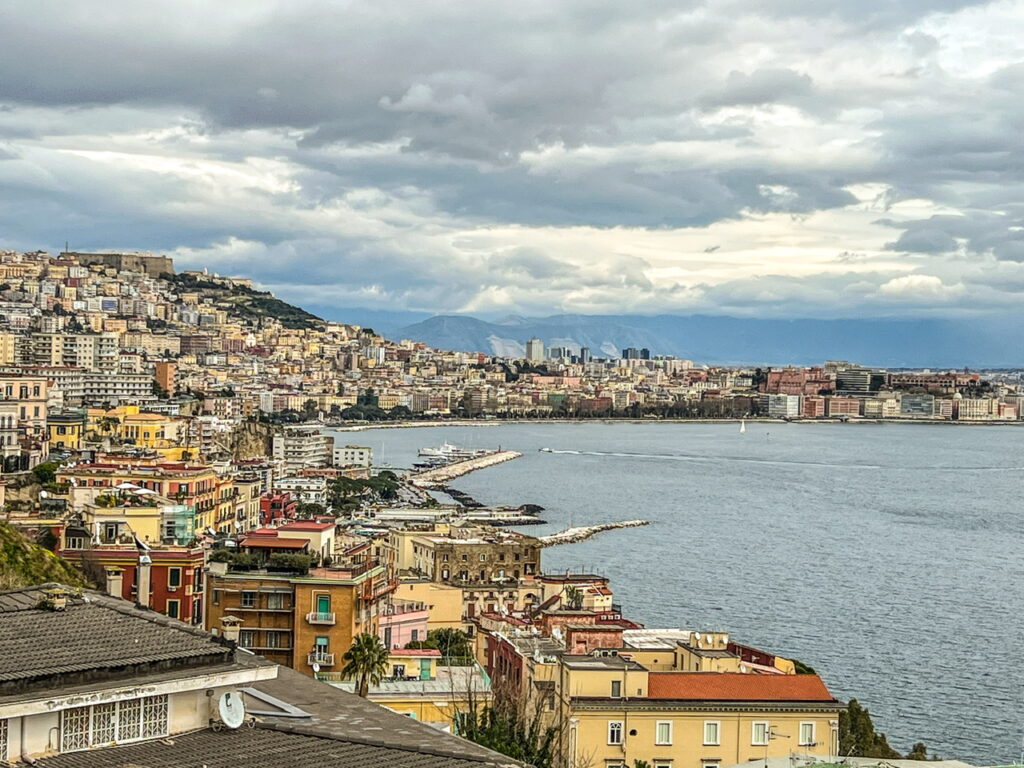
Take a day trip to Capri
Naples is a great base for a day trip to the beautiful island of Capri, known for its rugged coastline, turquoise waters, and upscale shops and restaurants. Here is a great private tour that was recommended to us!
In conclusion, Naples is a vibrant and fascinating city with a rich history, culture, and cuisine that is sure to captivate any traveler. With its stunning architecture, museums, and landmarks such as the Royal Palace of Naples, the Castel dell’Ovo, and the Cathedral of Naples, visitors can easily immerse themselves in the city’s past. Additionally, Naples is also renowned for its culinary delights, such as the world-famous Neapolitan pizza and delicious seafood dishes.
While Naples has had its challenges with safety and cleanliness in the past, recent efforts by the city’s government have led to noticeable improvements in these areas, making it a more comfortable and enjoyable destination for visitors. Remain vigilant, as you would in any other busy large city. You should also be sure to explore the surrounding areas such as Sorrento and Positano along the stunning Amalfi Coast.
Overall, Naples offers a unique and authentic Italian experience that should not be missed. With its stunning sights, delicious food, and welcoming atmosphere, it’s no wonder why this city has become a must-visit destination for travelers from all around the world.
-S&E

